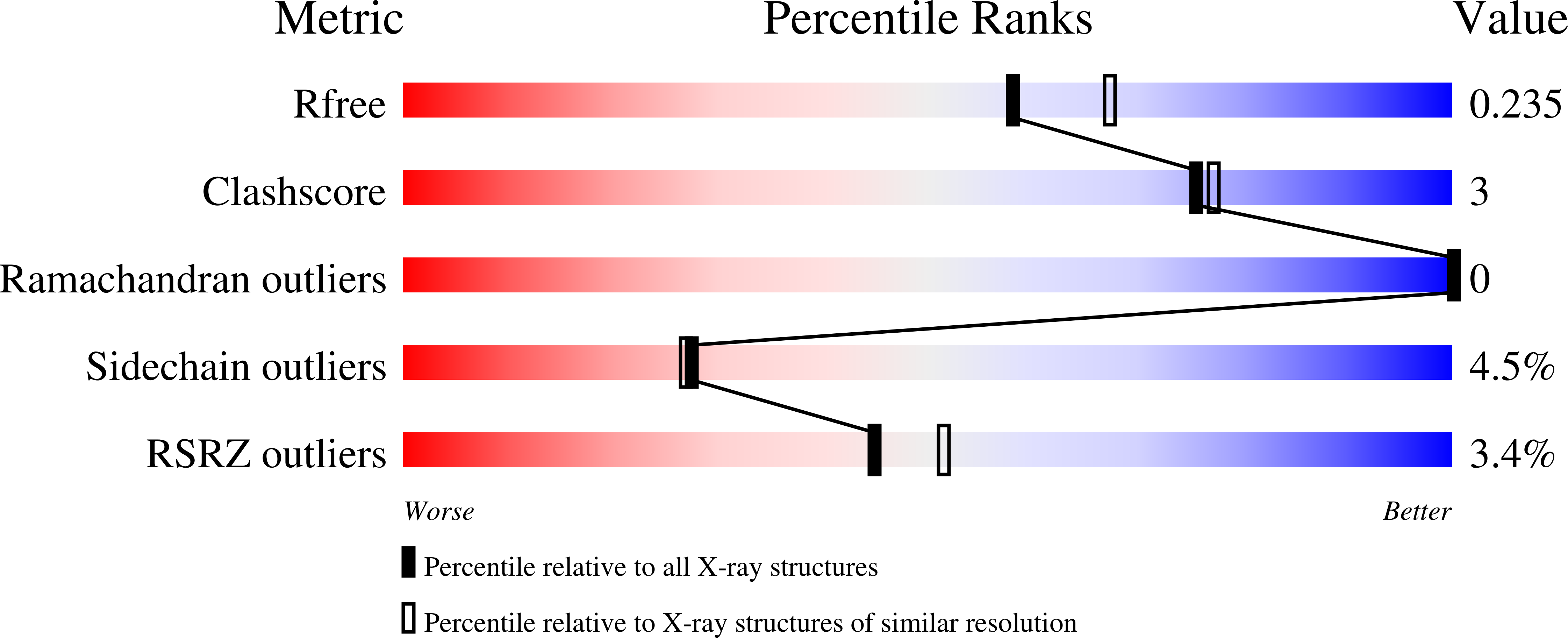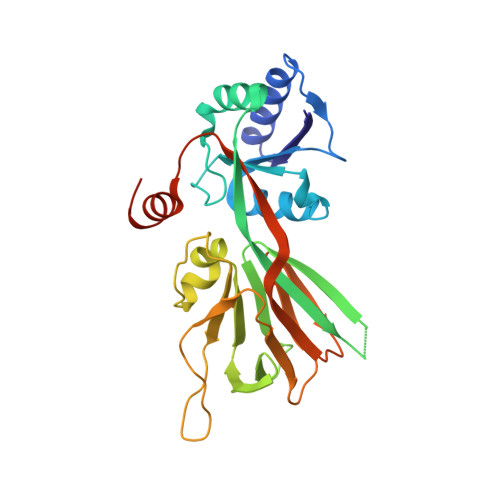Synthesis and structure-activity relationship studies of original cyclic diadenosine derivatives as nanomolar inhibitors of NAD kinase from pathogenic bacteria.
Clement, D.A., Gelin, M., Leseigneur, C., Huteau, V., Mondange, L., Pons, J.L., Dussurget, O., Lionne, C., Labesse, G., Pochet, S.(2023) Eur J Med Chem 246: 114941-114941
- PubMed: 36455355
- DOI: https://doi.org/10.1016/j.ejmech.2022.114941
- Primary Citation of Related Structures:
7ZZ7, 7ZZ9, 7ZZA, 7ZZB, 7ZZC, 7ZZD, 7ZZE, 7ZZF, 7ZZG, 7ZZH, 7ZZJ, 8A9V, 8B47 - PubMed Abstract:
Nicotinamide adenine dinucleotide kinases (NAD kinases) are essential and ubiquitous enzymes involved in the production of NADP(H) which is an essential cofactor in many metabolic pathways. Targeting NAD kinase (NADK), a rate limiting enzyme of NADP biosynthesis pathway, represents a new promising approach to treat bacterial infections. Previously, we have produced the first NADK inhibitor active against staphylococcal infection. From this linear di-adenosine derivative, namely NKI1, we designed macrocyclic analogues. Here, we describe the synthesis and evaluation of an original series of cyclic diadenosine derivatives as NADK inhibitors of two pathogenic bacteria, Listeria monocytogenes and Staphylococcus aureus. The nature and length of the link between the two adenosine units were examined leading to sub-micromolar inhibitors of NADK1 from L. monocytogenes, including its most potent in vitro inhibitor reported so far (with a 300-fold improvement compared to NKI1).
Organizational Affiliation:
Institut Pasteur, Université Paris Cité, CNRS UMR3523, Unité de Chimie et Biocatalyse, F-75015, Paris, France.

















